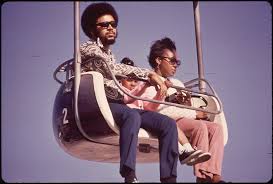In a lucid and lively NYRB review of Robert D. Putnam’s Our Kids: The American Dream in Crisis, a new volume which suggests that a myriad of grassroots problems have caused social mobility to founder, Nicholas Lemann astutely questions if the author perhaps has the cause and effect confused. Maybe a fraying social fabric hasn’t led to a decline in upward mobility but a flattening of the middle class and those who aspire to it has instead caused a sense of community to crumble.
Due to globalization, de-unionization, changes in taxation and automation, the piece of the American pie enjoyed by the non-wealthy has been in steep decline in the U.S. since 1974. Between the lines, Putnam, like Lemann and Thomas Piketty, seems to acknowledge that higher education, more than social capital, is a likelier remedy to the problem. I wonder, though, how much longer that will be true. Technological forces that have disrupted other industries will likely soon come for the university, which could lead to an increased polarization in credentials and access (even as more knowledge than ever will be available online). That shift coupled with what might be a decline in opportunity owing to robotization could neutralize even the great equalizer.
Another interesting bit from Lemann: Individual mobility has always been something of a myth, as each person has usually been raised or lowered by the greater sweep of history and politics. Dick, born at an inopportune moment, would likely remain ragged.
An excerpt:
By the logic of the book, access to social capital ought to be strongly associated with going to college and doing well there—otherwise, why stress it so strongly? The syllogism would be: social capital leads to educational attainment, which leads to mobility. But for his classmates, Putnam reports, academic achievement was the factor most predictive of college attendance, and the link between such achievement and parental encouragement (of the kind he has copiously praised in the main body of the book) was only “modestly important,” and “much weaker” than the link between class rank and college attendance. Not only that:
No other measure of parental affluence or family structure or neighborhood social capital (or indeed anything else we had measured)—none of the factors that this book has shown are so important in producing today’s opportunity gap—had any appreciable effect on college attendance or other educational attainment.
In the methods appendix, Putnam refers readers to his website for more detail on his findings about his classmates. There, he writes:
No measure of parental resources adds any predictive power whatsoever—not parental occupational status, not parental unemployment, not family economic insecurity during high school, not homeownership, not neighborhood characteristics, and not family structure…. Parental education, parental encouragement, and class rank were all modestly predictive of extracurricular participation, but holding constant those variables, extracurricular participation itself was unrelated to college-going.
So is it really the case that Putnam has shown that strong social capital once produced individual opportunity—let alone that the deterioration of social capital has produced what he calls the opportunity gap? The passages I just quoted seem to indicate that the strong association between social capital and opportunity that is Putnam’s core assertion has not been proven. Putnam doesn’t define “social capital” precisely enough to rigorously test its effects, even on as small and unrepresentative a sample as the one in his survey, and he doesn’t attempt to test its effects precisely in the present. It could even be that, rather than social capital generating prosperity, prosperity might generate social capital, which would mean Putnam has been showing us the effects of inequality, not the causes.•


